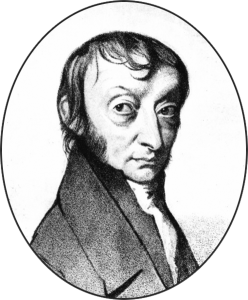5.1 The Mole and Avogadro’s Number
Learning Objectives
- Apply Avogadro's number ([latex]6.022\times10^{23}[/latex]) to represent large amounts of a species through the mole within chemical contexts.
In speech, we use alternative units to describe amounts of items. For instance, [latex]1[/latex] dozen [latex]=12[/latex] objects, [latex]1[/latex] score [latex]=20[/latex] objects, [latex]1[/latex] ream [latex]=500[/latex] sheets paper, likewise in chemistry, chemist consider:
[latex]1~\textrm{mole}=6.022\times10^{23}\textrm{objects}[/latex]
There are many interesting units and groupings in science! Leigh Mercer is most often credited with a famous mathematical limerick to assist in remembering rather odd values.
[latex]\frac{12+144+20+3*\sqrt{4}}{7}+(5\times11)=9^2+0[/latex]
A dozen, a gross, and a score
Plus three times the square root of four
Divided by seven
Plus five times eleven
Is nine squared and not a bit more.
The objects can be anything, such as houses, sand, eggs, oranges, etc. However, in chemistry, the objects we are concerned with are mainly atoms, ions or molecules - objects that are invisible to the naked eye!
One mole of anything contains [latex]6.022\times10^{23}[/latex] objects. For instance, one mole of eggs contains [latex]6.022\times10^{23}[/latex] eggs, one mole of carbon contains [latex]6.022\times10^{23}[/latex] carbon atoms, and one mole of carbon dioxide contains [latex]6.022\times10^{23}[/latex] carbon dioxide molecules.
The symbol of moles is “[latex]mol[/latex]”[1].

- Thus, three moles (3 mol) of particles is three times [latex]6.022\times10^{23}[/latex] particles [latex]\left(3\times6.022\times10^{23}\right)[/latex], and ten moles (10 mol) of particles is ten times [latex]6.022\times10^{23}[/latex] particles [latex]\left(10\times6.022\times10^{23}\right)[/latex].
- If we had [latex]3.011\times10^{24}[/latex] atoms of gold [latex]\left(\ce{Au}\right)[/latex], the number of moles of gold would be: [latex]\ce{n(Au)}=\frac{3.011\times10^{24}\textrm{atoms}}{6.022\times10^{23}\textrm{atoms mole}^{-1}}=5.000\textrm{mol}[/latex]
This exact number is a fundamental SI unit within science. Avogadro’s number [latex]N_A[/latex] is the term used for [latex]6.022\times10^{23}[/latex] objects.
Avogadro’s number is the link between the number of atoms (or molecules or ions) of a material and the number of moles of material. Understanding it allows chemical equations to be represented through the ratios of compounds and particles — enabling us to upscale reactions outside of individual atoms to notable masses and quantities for measurement and experimentation.
Key Takeaways
- 1 mole is considered to be [latex]6.022\times10^{23}[/latex] atoms or molecules (Avogadro's number).
- Utilising moles as a unit is important to allow us to talk about specific atomic quantities easily.
Exercises
Media Attributions
- Amadeo_Avogadro is licensed under a Public Domain license
- The plural of mole is moles, but when using it as a unit, there is no need to use mols (just mol; eg. 3 moles = 3 mol). ↵
The number of things equal to the number of atoms in exactly 12 g of carbon-12; equals 6.022 × 10 to the power of 23 things.

